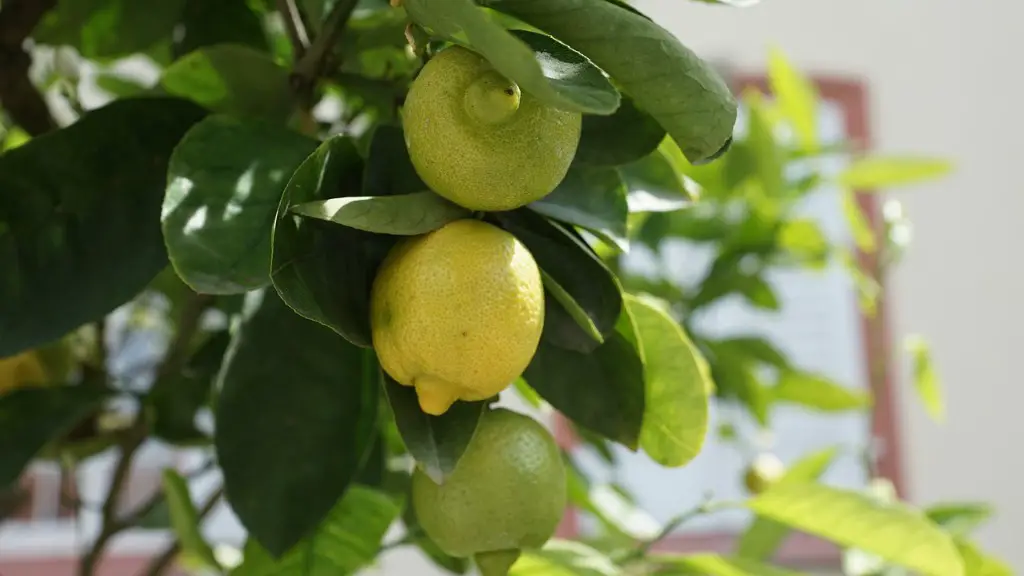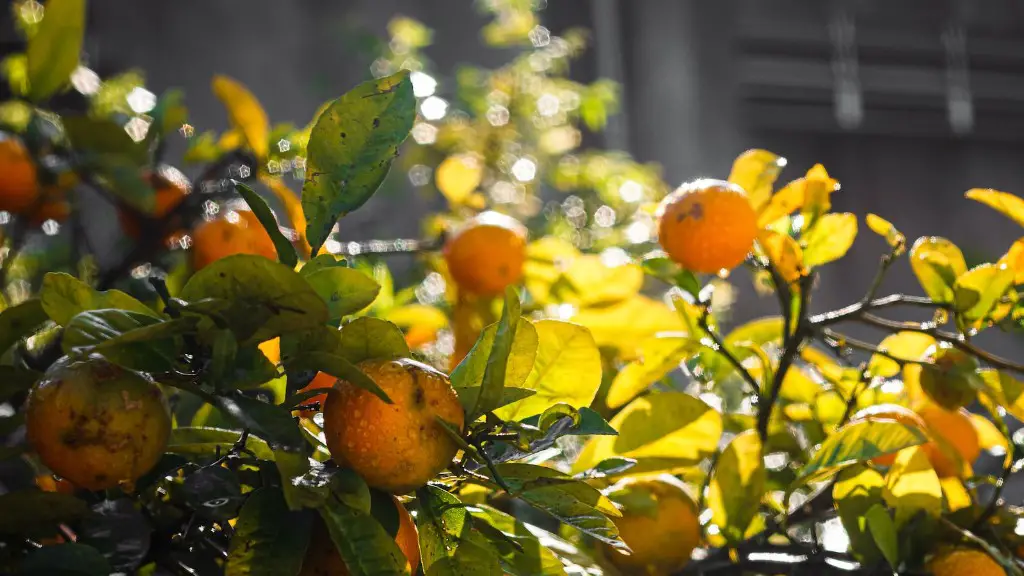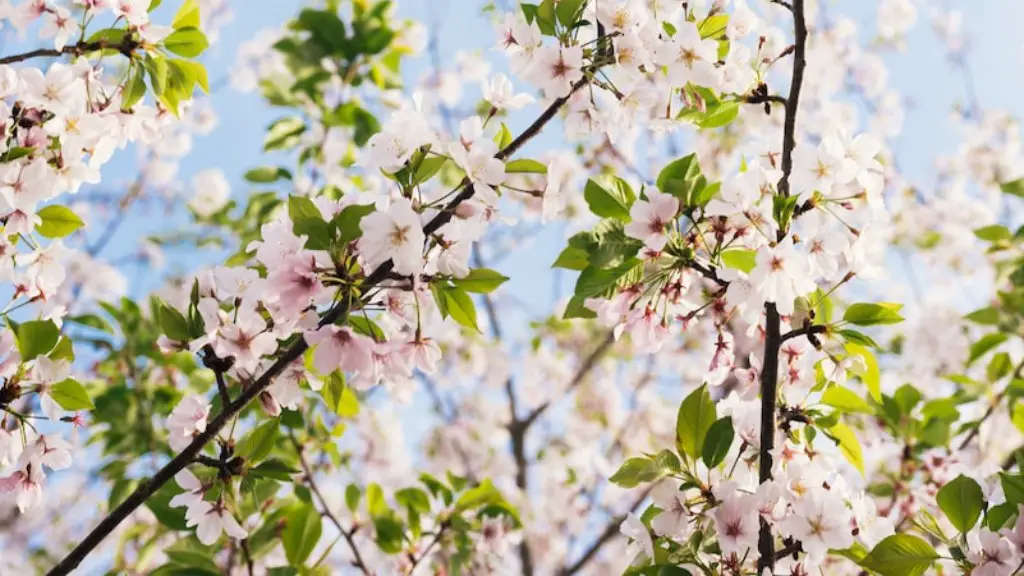Yes, it is possible to leave a potted lemon tree outside in winter, however caution should be taken to ensure that it is not exposed to extreme temperatures and temperatures below freezing. Depending on where one lives, this may or may not be a viable option for protecting a potted lemon tree during the winter. One key factor to consider when leaving a lemon tree outside during winter is the actual climate of the particular region.
If the temperature is mild and below freezing temperatures do not occur often, then this is a viable option for protecting a potted lemon tree in winter. The best practice for leaving a potted lemon tree outside is to keep it in an area with good drainage, to ensure that the roots do not freeze or over-water. It is also important to provide a good layer of mulch to insulate the soil and roots. If the temperature goes below zero and is expected to remain so for more than a few days, then the tree should be brought inside to protect it from extreme temperatures.
If the weather is particularly unpredictable during the winter, it is best to move the potting container inside the house during colder months. Find a warm, sunny spot that receives at least 6-8 hours of direct sunlight. The tree should have good indirect light and drainage, and the soil should be kept moist, not soggy. A good rule of thumb when it comes to watering is to water every two weeks until the soil is lightly damp, and not to over-water it. It is also important to shelter the tree if the temperature drops below freezing.
When it comes to fertilizer, it is best to wait until the warmer months to feed the lemon tree, usually once a month with a balanced fertilizer that is made specifically for citrus trees. This will help to encourage growth and promote strong, healthy branches. If the tree is moved indoors during the winter, then fertilizer may not be necessary, as the tree will be using less energy and going into a kind of hibernation mode.
It is important to inspect the potted lemon tree for any signs of pests or diseases, and to take appropriate steps to treat them. If the tree is moved inside during the winter, then it should also be inspected for pests and diseases. In the end, the best thing to do for a potted lemon tree in winter is to protect it from extreme temperatures and ensure that it has adequate sunlight, water and nutrition.
Frost Protection
When a potted lemon tree is left outside in winter it is important to provide extra protection against frost. This can be done by covering the tree with a thick layer of frost cloth, which should be wrapped around the trunk and branches of the tree and secured with sturdy ties or twine. This will help to prevent the lemon tree’s trunk and branches from freezing and dying. The frost cloth should be removed once the temperatures start to rise in spring.
It is also important to avoid over-watering in winter. Soil should not be allowed to become soggy, as this can lead to root-rot and other issues. It is better to err on the side of caution and water less in winter, rather than too much. If the soil does become too wet, make sure to add some extra drainage material such as sand or gravel to the potting mix.
Finally, it is a good idea to provide extra protection for the surface of the potting container. This will help to insulate the soil and roots from extreme temperatures. A thick layer of mulch is one option, which will also help to conserve moisture in the soil and keep the tree healthy.
In addition, it may be beneficial to utilize a ‘root-safe’ cold temperature system. This unit consists of a wire basket with a cover to cover the basket and prevent the soil from freezing. Once temperatures rise, the cover can be removed, allowing the soil to breathe. Such a system is beneficial for potted lemon trees, as it gives the roots extra protection in winter.
Winter Care
When it comes to caring for a potted lemon tree in winter, the focus should be on reducing stress and keeping the tree healthy. It is important to keep the tree in a warm, well-lit space, since cold temperatures can cause damage to the foliage, branches and roots. Providing additional protection from the elements, such as frost cloth and mulch, will help to ensure that the tree does not suffer too much in winter.
It is also important to make sure that the soil does not become too wet. If this is the case, it is important to adjust the watering schedule accordingly, and make sure that the soil drains quickly and thoroughly. Adding extra drainage material to the potting mix can also be beneficial.
In addition to watering, it is important to provide the tree with adequate nutrients. During the winter months, when the tree is not actively growing, it is best to wait until the warmer months to feed the tree. On average, this should be done once a month with a balanced fertilizer that is specifically made for citrus trees. This will help to promote strong and healthy branches.
Finally, it is important to protect the tree from pests and diseases. This can be done by keeping the tree in a clean, weed-free area, and inspecting the leaves and branches on a regular basis. If any signs of pests or diseases are spotted, action should be taken to treat them.
Growth and Temperature Considerations
When it comes to leaving a potted lemon tree outside in winter, temperature is an important consideration. If temperatures are mild, and freezing temperatures do not occur often, then this is a viable option. However, if extreme cold is expected, then it is best to move the potting container inside the house where it can be kept at a comfortable temperature.
Temperature is also important for growth and development. Lemon trees require temperatures of at least 10°C (50°F) for optimum health and growth. If temperatures drop too low, this can cause damage to the foliage and leaves, as well as affecting the growth of new branches and leaves.
In addition to temperature, it is important to make sure that the tree is not exposed to too much direct sunlight and heat. Lemon trees require plenty of light, but avoid exposing them to too much direct, direct sun. This can burn the leaves and cause long-term damage.
Finally, it is important to make sure that the tree is getting adequate water and nutrition. As mentioned before, it is best to wait until the warmer months to feed the tree, with a balanced fertilizer that is designed specifically for citrus trees. It is also important to keep the soil lightly moist, and not soggy, and to provide protection from the elements when needed.
Conclusion
Overall, it is possible to leave a potted lemon tree outside in winter, providing proper protection is taken to avoid extreme temperatures, including frost and extreme cold. Making sure that the tree is in an area with good drainage, adequate sunlight and nutrition, and protection from the elements can help to ensure its health and longevity.



